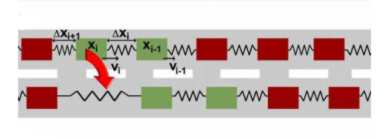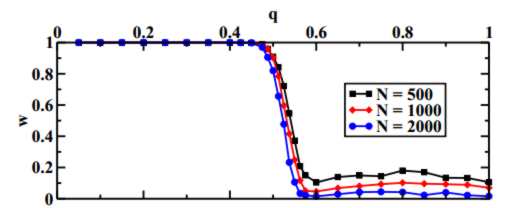| Simulation Reveals Best Strategy For Congested Traffic |
| Written by Alex Armstrong |
| Monday, 16 July 2012 |
|
We all know the problem - stick with a slow moving lane or change to the other lane, which usually then slows down even more than the original lane. Now we have a definitive solution via a Monte Carlo Simulation. Traffic flow is an ideal subject to study using Monte Carlo simulation. All you have to do is model the dynamics of queues of cars and then add some probabilistic assumptions and let the random number generator create days of driving data. In this case the dynamics of two lanes of traffic is modeled using blocks connected by springs to simulate the average distance between the vehicles. Next you add the ability to switch lanes:
The lane changing can be made realistic by adding conditions such as that there has to be space in the other lane for a car to move into. Notice that as a car moves into a new lane there is less free space in that lane and more in the lane vacated. With an accurate model you can now ask questions about total traffic flow etc. However, in this case two researchers, Ferenc Jarai-Szabo and Zoltan Neda from Babes-Bolyai University, Romania have asked the more personal question of which strategy is better - the lane swapping strategy (ST1) or the lane sticking strategy (ST2) for a particular driver? In other words, if you switch lanes do you really get where you are going faster or should you just stick with what you have. And you might not like the answer: A clear conclusion emerges from our results, the winning strategy is the one adopted by the less number of cars. If the majority of drivers use the ST2 strategy then the ST1 strategy is the winner and inversely if the majority of blocks use ST1, then the ST2 strategy proves to assure a better advance under congested traffic situations. You could almost have guessed, couldn't you. If everyone switches lanes then sticking with your lane is the better option and vice versa. This mirrors many of the results in game theory where a selfish strategy works well, but only if it is the minority strategy. The results suggest that, if you are in the situation, you need to adopt the strategy that you see being used less often - which is usually lane changing as most drivers simply stay in the lane they are in, unless of course they have read this item.
The data from the simulations shows that there is a very clear "phase" change from effective to ineffective when the ratio of strategies in use, q, goes from below to above 0.5.
More InformationWinning strategies in congested traffic (PDF) Related ArticlesCompanies That Use Spreadsheets Survive
Comments
or email your comment to: comments@i-programmer.info
To be informed about new articles on I Programmer, install the I Programmer Toolbar, subscribe to the RSS feed, follow us on, Twitter, Facebook, Google+ or Linkedin, or sign up for our weekly newsletter.
|
| Last Updated ( Monday, 16 July 2012 ) |



